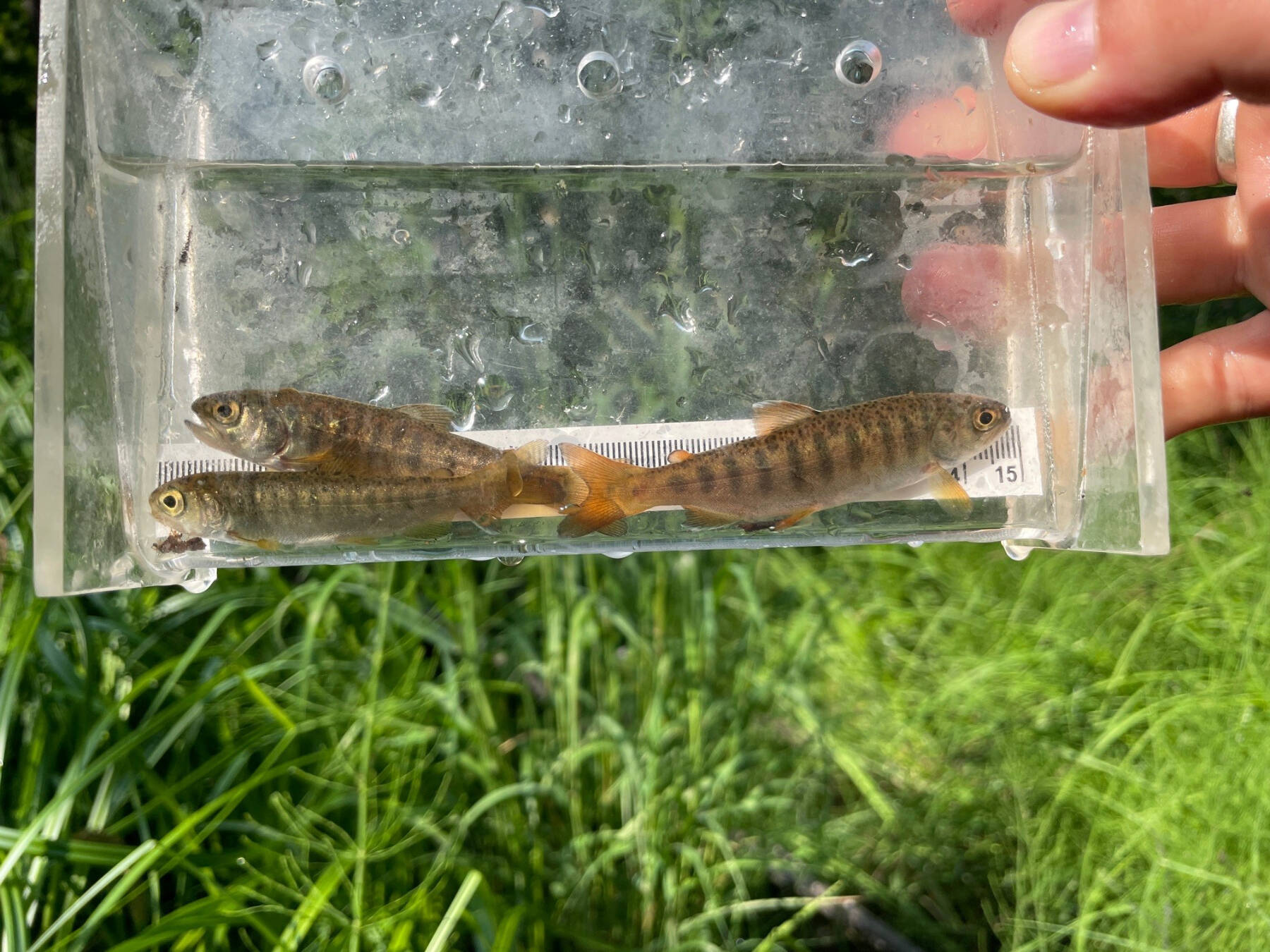Salmon and their habitats are a big deal in Alaska.
The Kenai Peninsula has more than 900 miles of salmon habitat split into 20 riparian corridors. There are a wide range of environmental factors that can impact salmon habitat such as nutrient runoff and obstruction of waterways.
The Natural Resources Conservation Service (NRCS) has financial assistance set aside specifically to protect this habitat on the Kenai Peninsula through the Working Lands for Wildlife Partnership (WLFW).
This WLFW project aligns with “Kenai Mountains to Sea,” a 2016 conservation strategy developed by the Kachemak Heritage Land Trust, U.S. Fish and Wildlife Service (USFWS), Audubon, Kenai Watershed Forum, Pacific Birds Habitat Joint Venture, and Cook Inlet Keeper. It allows NRCS to set funds aside for private landowners to restore and stabilize stream banks; create adequate passages for salmon; and restore habitat around riparian corridors.
An excellent example of landowners using NRCS funds to improve salmon habitat is in the off-road village of Tyonek across the Cook Inlet.
The Tyonek Tribal Conservation District (TTCD), the first Tribal Conservation District in the state, has taken the lead on many of these projects. For them, subsistence is agriculture and supporting local salmon habitat is paramount.
The village was designed in the 1960s, and many of the original culverts were too small. They often would clog with debris or completely blow out during high water events. Replacing or removing these problem culverts required a collaborative effort between TTCD, Tyonek Native Corporation, NRCS, USFWS, and Alaska Department of Fish and Game (ADFG).
NRCS took on the role of designing several culvert replacements, providing finical assistance through the Environmental Quality Incentives Program (EQIP).
Over the last 11 years, NRCS has assisted in the restoration of 46 miles of salmon habitat near Tyonek. TTCD has been excited to report that in many areas near the culvert replacements, they have seen an increased number of juvenile salmon.
NRCS is looking for other private landowners who are interested in restoring salmon habitat on their land. Together, multiple landowners coming together to work with NRCS can create a large impact on the landscape.
Do you own land that has a salmon stream or a tributary to a salmon stream running through it?
NRCS may be able to help improving your landscape for you and the salmon. Maybe you don’t have any roads crossing the stream, but you have one that runs alongside it.
NRCS can help plant vegetation to reduce erosion and potential contaminants. Maybe you want on keeping the streams at an ideal temperature, improve habitat for juvenile salmon, or focus your efforts on monitoring the habitat to track changes over time.
NRCS offers so many options; and what works best for you and your land may be different than what works for your neighbor.
For more information about working with NRCS on your land, reach out to the Homer NRCS office. Contact Emily MacDonald at 907-235-8177, 101 or email Emily.Macdonald@usda.gov. Learn more on the NRCS website at www.nrcs.usda.gov/ak or view our fact sheet “Conservation Options to Improve Salmon Habitat” at https://bit.ly/salmonNRCS.
Parts of this article are a summary of two articles found on the NRCS Alaska Website “Improving Salmon Habitat and Food Security in Tyonek, Alaska” and “Kenai Peninsula Salmon.” The article was written by Emily MacDonald, NRCS Soil Conservationist at the Homer Field Office. The Conservation Corner is monthly column with the USDA-NRCS Homer Office. This project was funded in part by the USDA National Institute of Food and Agriculture through the Western Integrated Pest Management Center, grant number 2022-70006-38003.



